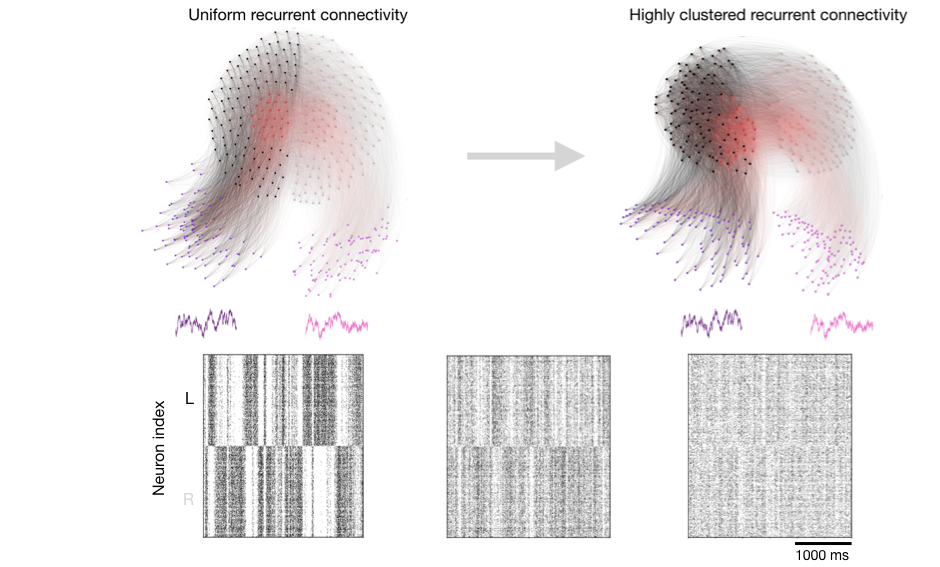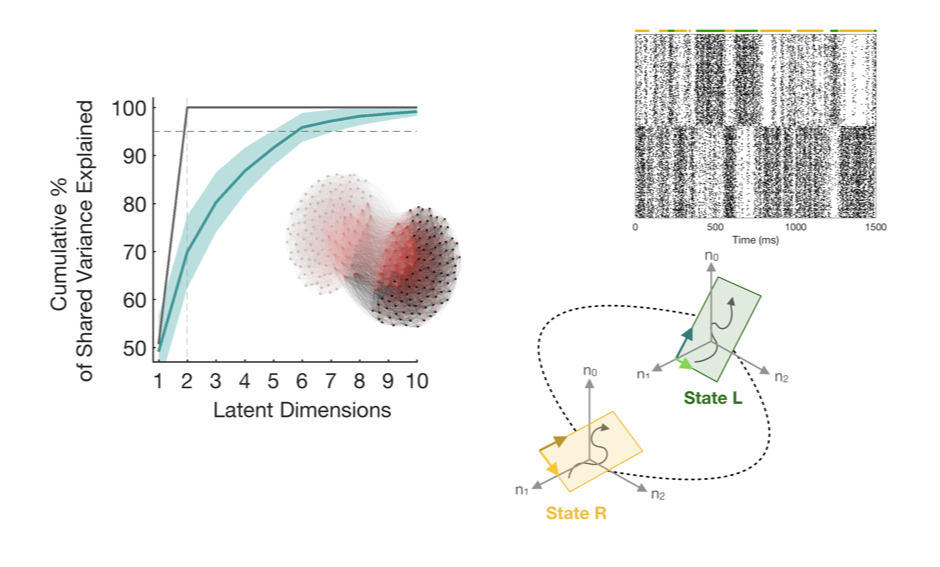Spiking Neural Networks with Tuned Assemblies
- Advisors: Brent Doiron, University of Pittsburgh Department of Mathematics Matthew Smith, Carnegie Mellon University Neuroscience Institute
Cortical circuits often receive multiple inputs from upstream populations with non-overlapping stimulus tuning preferences. Both the feedforward and recurrent architectures of the receiving cortical layer will reflect this diverse input tuning. We study how population-wide neuronal variability propagates through a hierarchical cortical network receiving multiple, independent, tuned inputs. We present new analysis of in vivo neural data from the primate visual system showing that the number of latent variables (dimension) needed to describe population shared variability is smaller in V4 populations compared to those of its downstream visual area PFC.
We successfully reproduce this dimensionality expansion from our V4 to PFC neural data using a multi-layer spiking network with structured, feedforward projections and clustered recurrent connectivity consisting of multiple, tuned neuron populations. Tuning-structured connectivity generates attractor dynamics within the recurrent PFC current, where attractor competition is reflected as high dimensional shared variabilty across the population. Restricting the dimensionality analysis to activity from one attractor state recovers the low-dimensional structure inherited from each of our tuned inputs. Our model thus introduces a framework where high-dimensional cortical variability is understood as “time-sharing” between distinct low-dimensional, tuning-specific circuit dynamics.

